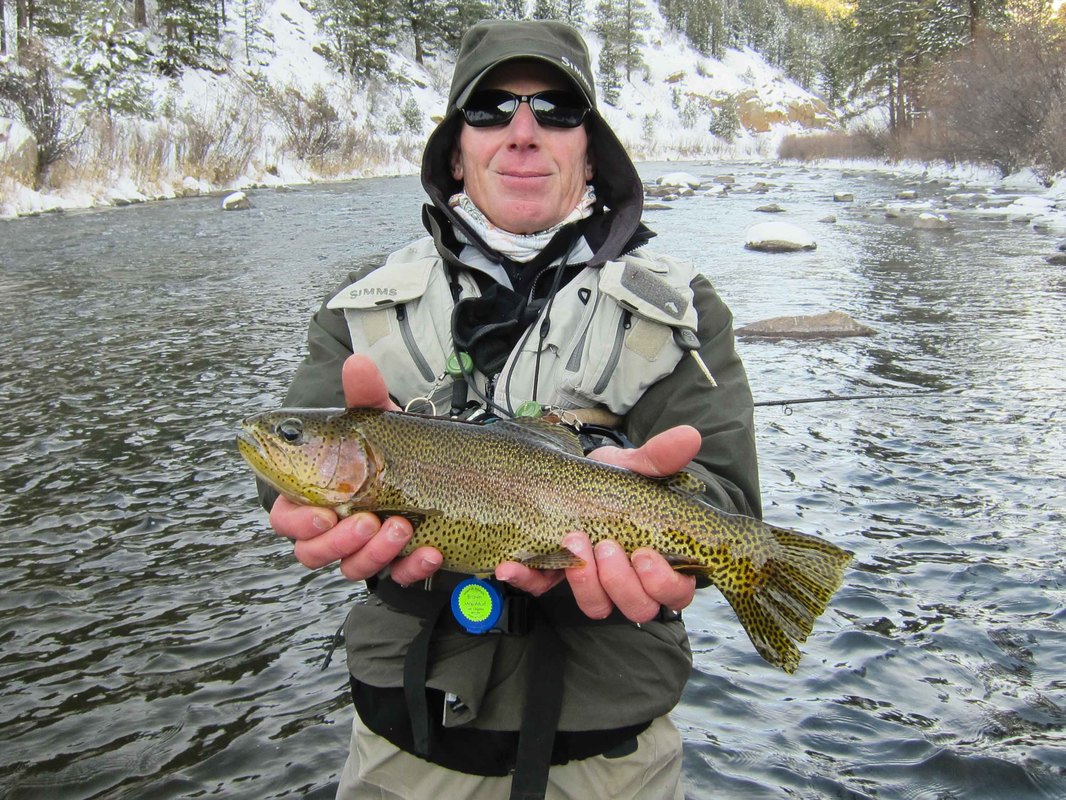Fly Fishing in the Winter—10 Tips to Catch More Trout
Here are a few tips to improve your winter fly fishing game. Being in the right place, at the right time, with the right flies is critical for success. Despite the recent warm weather trend—winter is far from over! March and April are two of the snowiest months in the central Rockies; so we’re not out of the woods yet! Here are a few suggestions to elevate your winter skills to the next level.
1) Target slower pools and deeper runs where trout overwinter.
2) Think simple, sparse, and most importantly small. Oftentimes, fishing with a size 24 instead of a 22 is the difference between catching fish and not catching fish.
3) The greatest window of opportunity is between 10:30 a.m. and 3 p.m. There is no need to get to the river at 7 a.m., you’ll just get cold and frustrated.
4) Long leaders (9-12 foot) terminating with 6X tippet stack the odds in your favor. Trout are super-selective this time of year; perfect presentations are a must to fool winter trout.
5) Think outside the box from time to time and throw something big: #10 Pat’s Rubber Legs, #10-12 cranefly larvae, #14-16 caddis larva etc. Trout are opportunistic at times and often grab a big bite during the winter. But, make no mistake about it—the bulk of your winter fish are fooled on minuscule flies.

Joe Airey fooled this beautiful South Platte rainbow on a tiny midge-nymph. Anglers willing to battle the elements can seek some solitude and find a few cooperative fish on almost any winter outting.
6) Finding a feeding fish is the greatest challenge during the winter months. For every dozen trout you locate, only a handful is actually feeding. Don’t waste time fishing to non-feeders—it’s a losing proposition.
7) Look for suspended fish that are holding mid-column.This is a good indication they are feeding. Adjust your weight and strike indicator to keep your flies in the correct feeding zone.
8) Look for midging trout in slower pools and glassy tailouts. If you look for rising fish, you’ll typically find them. A small Parachute Adams is a great midge imitation, especially in sizes 24-26. I use 7X tippet when fishing with dry flies as I believe it makes a huge difference in fooling selective trout.
9) Don’t rule out fishing with midge clusters. Oftentimes, the trout will key on midge clusters during the winter months. A #16 Dubas Midge or #16-18 Griffith Gnat is a great imposter for clusters.
10) Oftentimes the best fishing is toward the end of the day when the water has warmed up a few degrees. A three to five degree temperature swing can make all the difference in the world in finding feeding trout.
I hope you find a few of these tips helpful. If I can be of further assistance, don’t hesitate to contact me at patd@bluequillangler.com
